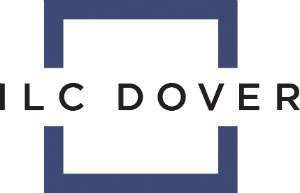Tray dryers are a common method of drying wetcakes and granulated
drug products, especially in the early product
development phase. The issue of containment for this type of
process equipment is unique in that open scooping of powder on to
multiple trays that get slotted into the dryer one at a time prohibits
a mass, single transfer as with charging a vessel through a nozzle.
There are many styles of tray dryers that drive the engineering
control here to a custom design; however, containment is accomplished
with a standard set of interface and design techniques.
The various styles of dryers, interfaces, door types, volumes, ergonomics and life cycle costs must all be taken into account in order to
meet the need of containing the dryer. Included here is whether the dryer
is portable or a fixed installation.
How does the system work?
The final design may vary from operation to operation but a typical installation
includes adding a flange to the face of the dryer to the outside of the door.
An enclosure made from the rugged ArmorFlex family of films is then attached
to the flange and a supporting frame assembly. The door is within an enclosed
environment when loading and unloading the trays with the drug product.
The trays, drug product and associated process tools can either be preloaded
into the enclosure or bagged into the isolated area via bag in/bag out (BIBO)
canisters or larger drum ring attachment canisters. The steps outlined below
represent a typical example of this type of process:
- Attach the enclosure to the support frame using the bungee cords supplied; also attach the enclosure to the BIBO canister
- Preload trays into the enclosure (or bag in after the enclosure is attached)
- Attach the enclosure to the flange on the dryer using the tape and V-Groove
trim method developed by ILC and open the dryer door - Load the bags of wet cake material into the enclosure through a bag-in
sleeve - Scoop material from the bags onto the dryer trays, load the trays into the
dryer and close the dryer door for processing - After the drying process is complete, open the door, remove the trays within
the enclosure and scoop the powder into plastic bags which in turn will
be placed into a bag-out sleeve; alternatively, the powder can be scooped
directly into a DoverPac, continuous liner or transfer sleeve - Crimp, cut a remove the contained materials for further processing
After processing is completed, spray mist the inside of the enclosure as part
of the overall wash down. The flexible enclosure will then be removed from
the dryer while wearing personal protective equipment (PPE) as part of the
wash down process.
Frames are typically supplied in 304 stainless steel with a 2b mill finish.
Other materials can be provided as required.
What are the applications?
Portable and permanently installed tray dryers have been fitted with
this type of flexible containment technology.
Features:
- Clear film allows use of existing light from the process area
- Bungee cords and HEPA filters allow the enclosure to move with
the operator - Static dissipative film supports ATEX and Ex operations
- Re-usable for repeated processing of same drug product
- Portable or permanent installations supported
- Customized to specific process and equipment without change to
drug product drying process
Benefits:
- Ergonomics maximized for visibility, operator height and reach
- No cross-contamination transfer to other parts of the plant
- Low capital, depreciation and operating costs maximize true cost of ownership
- Speed of implementation supports lab and production processes in any part of the plant
- Reduced cleaning and cleaning validation
- Product can be transferred between operations without breaking containment
- No change in validation
What containment level is provided?
A containment level of OEB 5 is provided, with results in the nanogram range. This is anticipated given actual customer feedback and
third party IH test results from similar designs as well as the 100% inflation dwell tests performed
on the deliverable enclosures.
Why use this over other technologies?
The cost of ownership, ergonomic advantages and speed of delivery benefits of this flexible
solution far outweigh those of rigid isolation systems.
For more information click the ‘Tray dryer whitepaper’ link at the bottom of our profile.

